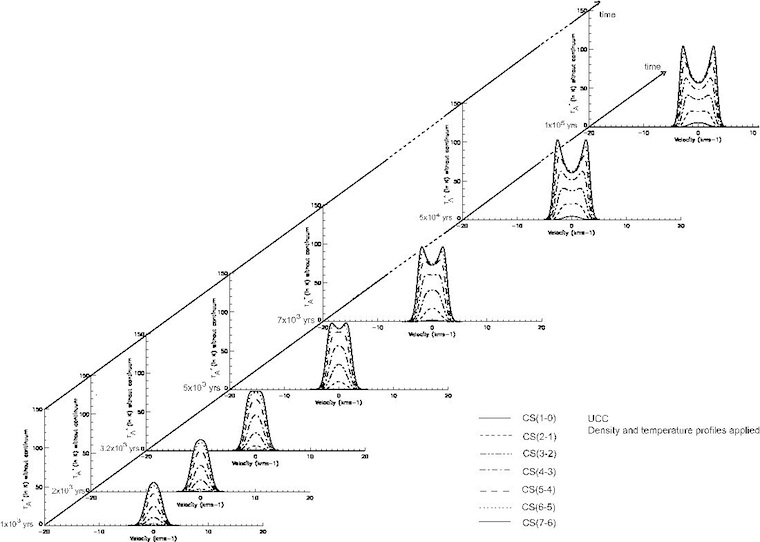|
| HOME |
| |
UCL_Chem, UCL_PDR and SMMOL InterfaceNEW: UCL_PDR Model Database, please click the link to the left. 24/06/11 SummaryThe UCL_Interface we present here (Bayet et al., 2010, re-submitted) is a very versatile and powerful tool designed for helping interpreting the coming and future Infrared, Submillimeter and Millimeter emission. More precisely, it helps interpreting lines from ions, atoms and molecules in a large variety of sources such as AGB stars, planetary nebulae, hot corinos, hot cores, star-forming regions, etc in both galactic and extragalactic environments. Basically, diffuse gas, translucent gas, neutral gas and molecular gas (with or without freeze-out onto grains) can be studied through the use of this Interface. The UCL_Interface is actually a fortran 95 programme which couples the Chemical (Viti & Williams 1999, Viti et al. 2004) and Photo-Dominated Region (PDR) codes (Bell et al., 2006, 2007) to the radiative transfer code, SMMOL (Rawlings & Yates 2001), all three developed and hosted in the Physics and Astronomy Department at UCL. It actually transforms the output from UCL_Chem or UCL_PDR into line fluxes and profiles via the use of SMMOL. The outcomes of the UCL_Interface are the access to line profiles of about 200 species depending on the time (i.e. following the evolution of the source), the physical conditions and the characteristics set for the source (density, temperature, FUV radiation field, Cosmic-ray ionisation rates, radial velocity profile, turbulence velocity, etc). Example of the evolution of CS line profile (from CS(1-0) to CS(7-6)) obtained for an archetypical hot core from the Interface (click on the image for a larger version) This page last modified 24 June 2011 by Dugan Witherick |

